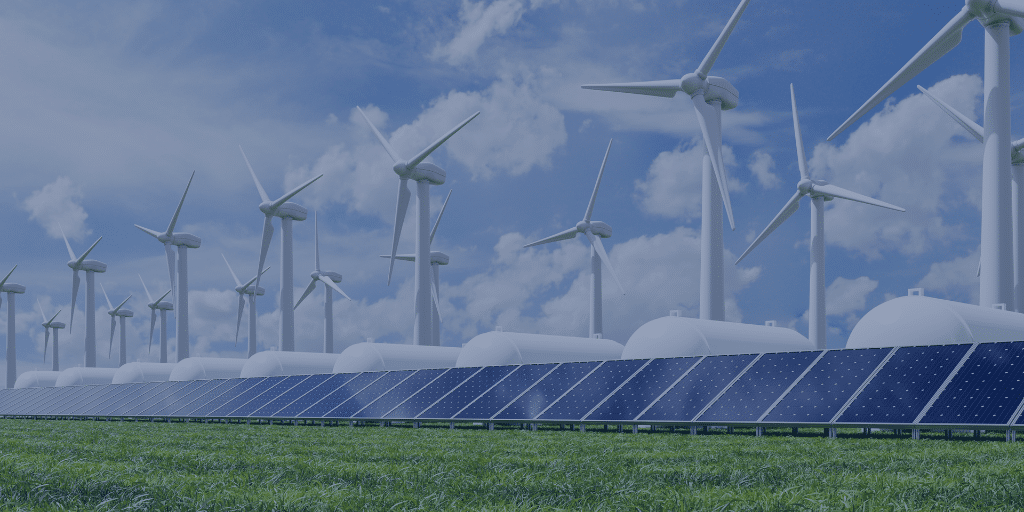The role of the electronics supply chain in the push for global environmental sustainability is significant due to the many applications of semiconductors in harnessing, converting, transferring, and storing renewable energy.
Recent innovations in the renewable energy space are focused on minimizing energy consumption by maximizing the efficiency of semiconductors powerful enough to run state-of-the-art tech at low temperatures. Let’s take a look at some of the practical applications in development.
ELECTRIC GRID OPTIMIZATIONS CALL FOR AI-CAPABLE INTEGRATED CIRCUITS
Our 100-year-old electric grid needs an efficiency overhaul, and smart grids are the way forward. Smart grids use sensors to collect data that helps engineers and consumers make decisions that impact energy efficiency, often combined with renewable energy initiatives.
The most robust smart grids use machine learning to monitor and analyze data to improve efficiency across the grid. Artificial intelligence (AI) in the energy and power sector is projected to grow at a CAGR of 24.68% to reach $14.527 billion by 2028 — and at the heart of AI are the semiconductors it runs on.
Application-specific Integrated Circuits (ASICs) offer AI and Machine Learning processes an energy-efficient boost, but they don’t come without environmental impacts. ASICs are so specialized that they’re difficult to repurpose for even related applications, as computationally heavy industries like crypto mining have seen. Crypto ASICs can only be used for the specific crypto mining algorithm they were engineered for, resulting in an average lifespan of 1.29 years and 30,700 tons of e-waste — equivalent to tossing almost two iPhone 13s per transaction.
SOLAR AND WIND SAY, “SO LONG, SILICON!”
“Gallium Nitride Valley” may not have quite the same ring to it, but the energy efficiency trade-offs may make it something we’re willing to live with.
Wide-bandgap (WBG) semiconductors like silicon carbide (SiC) and gallium nitride (GaN) are rapidly replacing traditional silicon in power semiconductor devices due to their significantly higher power density. GaN-based DC-DC converters are utilized in electric vehicles, solar inverters, and motor drives for wind turbines.
However, SiC is also difficult (and, therefore, expensive) to manufacture at scale, which is why Tesla recently announced a 75% reduction in SiC-based components for a more budget-friendly electric car model.
But diamonds may prove to be a semiconductor’s best friend in coming years. Diamond-based WBGs not only offer carbon reduction and significantly enhanced thermal efficiency, but cost-efficiency optimization too. In fact, diamond is 30% less expensive than silicon carbide due to a 50x reduction in the area necessary to glean the same performance output.
ADDRESSING THE ELEPHANT IN THE ROOM: THE ENVIRONMENTAL IMPACT OF MICROCHIP PRODUCTION
While semiconductors are at the heart of transitioning the world toward a green economy, true environmental sustainability requires looking at the whole package, including the environmental impact of producing the microchips themselves.
“As transistors get smaller, their interior interconnections are increasing, requiring more manufacturing steps in areas like deposition and etching that will produce quite an amount of GHG emissions,” Lars-Åke Ragnarsson, Program Director Sustainable Semiconductor Technologies and Systems at IMEC said. “What’s needed is extreme ultraviolet (EUV) lithography technology to minimize emissions during semiconductor fabrication.”
Fab manufacturers are already taking steps toward minimizing their carbon footprint. Infineon is leading the charge, expecting to be 70% carbon-neutral by 2025. In regard to its new 300-mm Smart Power Fab in Dresden, Germany, Infineon COO says, “In this new facility, we’ll put all the most modern techniques in place in order to recycle energy and water. This will be the most efficient fab.”
The 2016 Paris Agreement set the goal of net-zero carbon emissions by 2050 — a feat that will not happen without powerful, low-energy semiconductors produced via carbon-neutral processes. With power semiconductors in the global renewable energy market anticipated to boom with a CAGR of 8% to 10% from 2022 to 2027, the demand for high-power, energy-efficient chips is just getting started.
Read more:
● Electronics Supply Chain Outlook for 2023
● Finding a Sweet Spot: The Risks and Rewards of Sourcing Electronic Components Globally
● Strategically Sourcing Memory ICs in Today’s Electronics Industry





